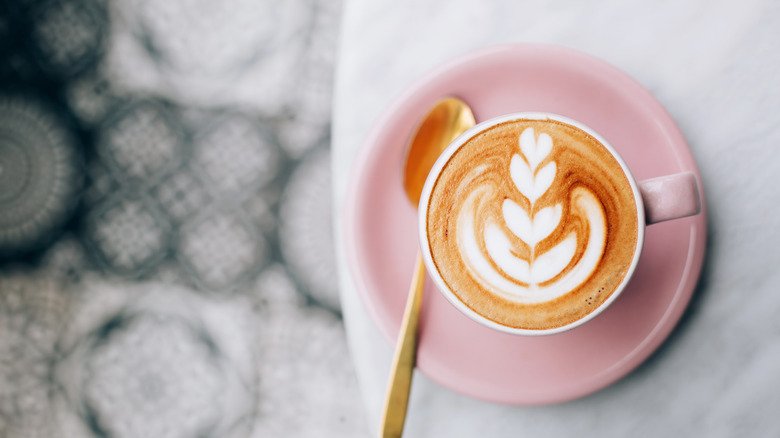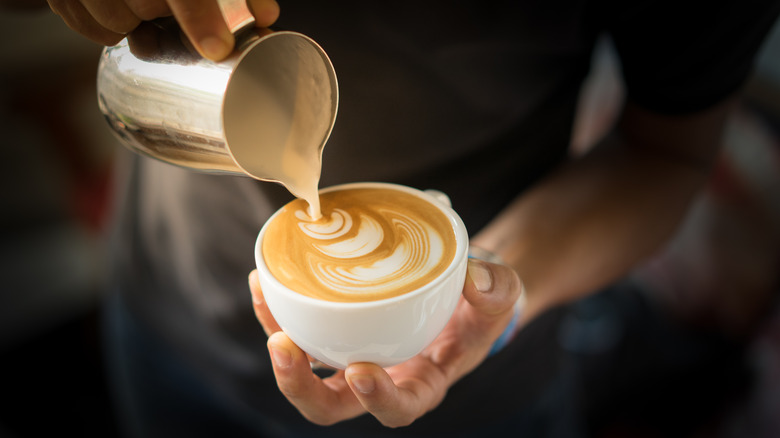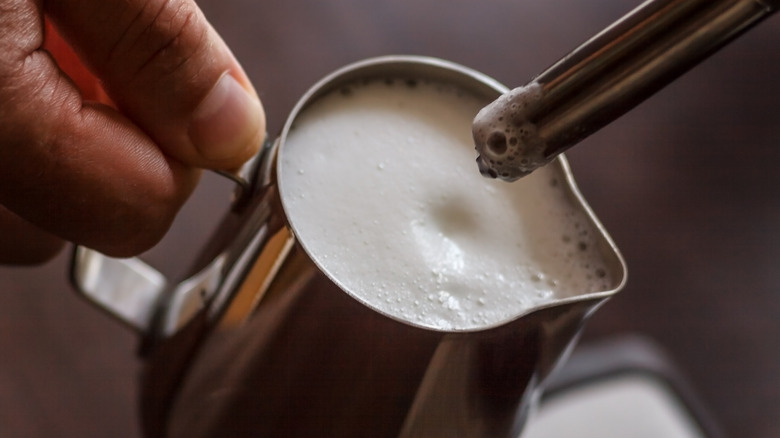What's The Difference Between A Wet And Dry Cappuccino?
While many of us are no strangers to the world of coffee (53% of Americans drink a cup of coffee a day according to a YouGov poll), some people take their love of the beverage to a whole new level. Treating the pour-over process like a daily meditation, perfectly tamping down each espresso shot on their machine at home, or having the same exact order at their local cafe for over a decade — some have a dedication to their coffee ritual that is beyond admirable.
For those who are less involved in the experience of their daily cup, knowledge of how and why baristas prepare their specialized coffee order at the local cafe might not go as deep. To some, knowing what a caffe latte, cappuccino, or Americano is at all is enough. But for other coffee fanatics, the little details matter, and even one ingredient can really make or break your coffee drink. So if you don't know much about the many elements of your coffee and just how much small things can alter the taste, let's change that. Consider this your first lesson in coffee 101. To start, let's talk about the difference between a wet and dry cappuccino.
A cappuccino: the basics of the beverage
Latte, cappuccino, macchiato: what makes all these coffees different? Before we jump into the difference between a wet and dry cappuccino, let's talk about what sets a normal cappuccino apart from other drinks in the first place. In its basic form, a cappuccino is a simple mixture of espresso and foamy steamed milk.The exact ratio usually comes to one part espresso, one part milk, and a top layer of foam. The distinction between a cappuccino and a regular latte is simply that a cappuccino will have more foam. So even though a latte has the same basic makeup as a cappuccino, it has more steamed milk and is not crafted to be foamy. This is what gives the cappuccino a creamier mouthfeel than other coffee drinks.
Taste aside, let's talk about labels. The name of the cappuccino itself came about in the 1800s due to its unique color. The simple mixture of the dark espresso and white of the milk created a unique golden brown hue that matched the color of the robes of the Italian Capuchin monks. Thus the name cappuccino came about. The basic history aside, the cappuccino can be split into two distinct categories when ordering — wet and dry.
Wet or dry. What's the difference?
When you order a cappuccino, you know to expect some sort of foamy mixture of espresso and milk, but there are different levels of foam to the popular beverage. If you know you prefer a particular amount of foam, you can choose to order your cappuccino wet or dry. If you're someone that prefers more foam in your coffee, a dry cappuccino is the best choice for you. A dry cappuccino is comprised mostly or almost all the way full of foam. Because more foam means less milk, this cappuccino might taste stronger than other variations.
A wet cappuccino is better for those that prefer more milk and less foam in their drink — usually just a dollop on top. Because the wet cappuccino has more milk, this drink will taste smoother than others. The most common cappuccinos are already made this way if you don't specify wet or dry. Lastly, if you prefer little to no foam at all, you're best off just ordering a latte. If you're not sure what you like yet, you can always experiment, and there's no shame in going with a classic and just ordering that cappuccino straight.


